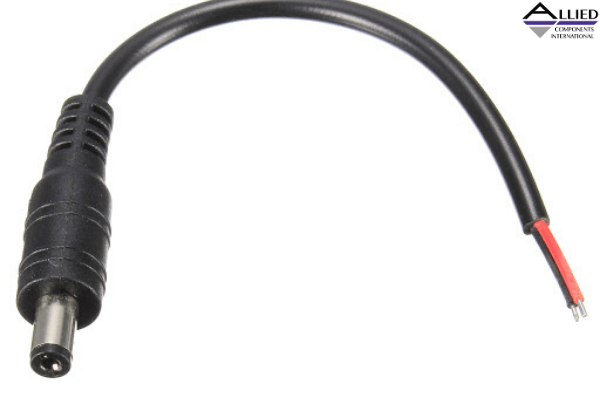We’ve all been there. A lost power adapter. Even though more and more things are powered by USB, there are still a lot of things that aren’t. That means you better keep that power brick handy.
I used to be the sort who kept every power adapter, every wall wart, et cetera because “you just never know” when you’re going to use it. And then of course, I never used them. It got to the point where it was just getting ridiculous how many of them I had. So this brings up the real question above. If you need a power adapter, can you use just any old one, or do you need something special? Here’s how to find out.
Obvious first question: does it fit?
There are about 15 different common shapes of power adapter. Most are a fairly simple cylinder with a center hole, similar to this:

Of course there are different thicknesses of cylinder, and different thicknesses of holes. These were originally supposed to indicate the voltage being used but realistically it’s just sort of meaningless. If you find a power adapter that looks like it will fit, try putting it in gently. If you have to force it at all, it’s not right for you.
Looking at polarity
There should be a diagram on the device and on the power brick that looks like this:

This is telling you the polarity. In this case, the positive is the center and the negative is the outside. See how the + points to the center part? You need to make sure these are the same on the device as they are on the power adapter. If they aren’t, you could cut the power adapter apart and switch the wires, but that does seem like it would be a lot of work.
Current draw
Again, look at the device and at the power adapter. You’re looking for the draw in volts and amps. This is required to be on every device and every adapter somewhere. They don’t need to match exactly, but here’s what you need to know.
Volts
First of all, it’s common for a device to accept a range of voltage. It may say 100-240, or 5-20, or whatever. This makes it easy for you because you’re not limited by the voltage of the power adapter.
Ideally the voltage numbers should match. If the device says 12V, the power adapter should show 12V as well. However, you can usually fudge a little. Like, an 11V device can be powered by a 10V or 12V power supply. You can be up or down a volt or even two. Theoretically this will shorten the life of both the device and the power adapter but if you’re looking at this as a temporary solution, you won’t notice.
What you definitely don’t want to do is have the power adapter supply much more voltage than the device needs. If you are supplying 50V and the device needs 5V, you will for sure fry the device by plugging in that adapter. So don’t do that. In the other case, where the device needs 50 and the adapter supplies 5, the thing probably just won’t power up so you’re safe.
Amps
Here’s where you can be a lot more flexible. The amperage rating on the power adapter is the MAXIMUM amperage it will supply, not necessarily the CONTINUOUS amperage. There are a lot of ways of thinking about volts and amps, but in this case think about your ability to lift things. If you lift something light, that’s like drawing only a few amps. Your arms don’t work so hard. But, if you need to lift something heavy, you struggle. This is like drawing a lot of amps.
So it’s ok if the power adapter is capable of supplying more amperage than the device needs. The device will only pull the amperage it needs. If your power adapter is 4A (4 amps) and the device requires 2A, you’re good. Now, if your power adapter is 500A and the device only requires 2A, that might be a problem. Not because the device won’t just pull 2A, more because a high-amperage power supply may fluctuate more in what it supplies.
If the power adapter can supply 2A and your device needs 4A, it will probably work until it doesn’t. It’s sort of like your being unable to lift something heavy. Your arms can’t supply enough power to meet the demand.
Bottom lining it
Here are a few examples. Let’s presume you got a power adapter and it fits in your device, and the polarities match.
| POWER ADAPTER SUPPLIES | DEVICE REQUIRES | RESULT |
|---|---|---|
| 5 volts | 10 volts | BAD |
| 7 volts | 5 volts | OK FOR NOW |
| 29 volts | 5 volts | VERY BAD |
| 4 amps | 2 amps | GOOD |
| 2 amps | 4 amps | BAD |
If you have questions about power adapters, whether you got them at Solid Signal or not, call us! We’re here to offer free tech advice during East Coast business hours. The number is 888-233-7563. Of course, we would prefer that you shop at Solid Signal for all the accessories you need, as it does help us stay in business.

